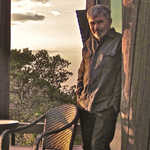The Turtles Mountains are one of my favorite places to visit in Manitoba and I spend many weeks camping there each summer with my family. The Turtle Mountains are located and shared between Manitoba, Canada and North Dakota, USA. The mountains are a plateau that are 600 m (2000 ft) above sea level and encompass an area of 184 km2. The landscape features undulating hills, marshlands, deciduous forests, and many shallow lakes. It also has deposits of low grade manganese in its soil. The Turtle Mountain area was originally surveyed by explorers such as Palliser, and later in the mid-nineteenth century, Dawson and Hind who charted its topography and resources. It is a very old area and rock layers of black shale and limestone have been found from the Mississippian age which was 240 to 265 million years ago. The Turtle Mountains are the oldest inhabited region of the province and was home to early nomadic people who hunted mammoths and large buffalo. After the ice age ended 10,000 years ago, the land shifted into the topography we see today. It was then home to First Nations people who were hunters and gathers that lived off the land until the 19 the century, when they were forced from this land. The first nation’s people hunted the great bison that roamed the prairies. They used every part of the bison and left little waste. The meat was eaten, the hides were made into blankets roes, clothes, and the bones used for tools, weapons, and utensils. The bison was an important part of their ceremonies, songs, and stories. Even the animal’s droppings were used as fuel and were called “buffalo chips”. In the early 19th century the Métis, who were a mixed blood group of First Nations/Scottish/French came to live in the area where they hunted the bison and eventually settled in the area after the bison heard disappeared. The picture shown is of the Turtles’ Back, it is one of the highest points of the mountain and acts as a look out area. It is reached after climbing a strenuous trail which starts at William Lake. It offers hikers a beautiful panoramic view of the area and features trail markers that tell the story of early prairie migration. Sources http://www.gov.mb.ca/conservation/parks/popular_parks/western/turtle_info.html#01
Filed Under
Other moments in Brandon
-
prairie first nations, indigenous, Brandon Story Class
Stolen Sisters......
in Brandon, Canada -
prairie first nations, indigenous, Brandon Story Class
Brandon, Manitoba Industrial School
in Brandon, Canada -
prairie first nations, indigenous, Brandon Story Class
Susan, Swampy Cree Woman.
in Brandon, Canada -
indigenous, prairie first nations, Brandon Story Class
Fort Desjarlais (1836-1858)Fort Desjarlais is remembered as the largest fort, most prominent and most successful of the Souris River trading posts in the fur trading days in Manitoba.
in Brandon, Canada -
prairie first nations, indigenous, Brandon Story Class
John Norquay (1841-1889) First Metis Premier of Manitoba.
in Brandon, Canada -
prairie first nations, indigenous, Parks
Stott Site and the Buffalo Jump.
in Brandon, Canada -
indigenous, prairie first nations
Friendship Centers...
in Brandon, Canada -
Brandon Story Class, indigenous, prairie first nations
"The legend of the White Horse"
in Brandon, Canada -
Brandon Story Class, indigenous, prairie first nations
A picture of The Plains Indian Buffalo Hunt, by my son, in grade 6.
in Brandon, Canada



